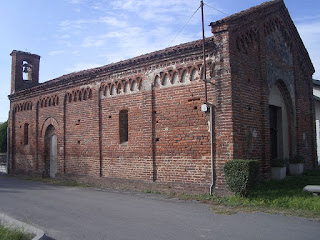Giovanni Battista Viotti – violinist and composer
Brilliant musician wrote the melody for the Marseillaise
Violinist Giovanni Battista Viotti, who was to become court musician to Marie-Antoinette and composed 29 violin concertos, was born on this day in 1755 in Fontanetto Po in the region of Piedmont. Among Viotti’s many compositions for the violin, string quartets and the piano, his violin concerto No. 22 in A Minor became particularly well known. He is also credited with having composed the original music of La Marseillaise, the national anthem of France, 11 years before it was officially published by another composer. Viotti’s musical talent was spotted early and he was taken into the household of Principe Alfonso dal Pozzo della Cisterna in Turin, where he received a musical education. This prepared him to become a pupil of the virtuoso violinist and composer Gaetano Pugnani, while still a teenager, funded by the prince. Viotti served at the Savoy court in Turin from 1773 to 1780, before travelling with Pugnani in Germany, Poland and Russia. He went to France alone, where he made his debut as a violinist in 1782 in Paris. He was an instant sensation and became court musician to Marie-Antoinette at Versailles. Read more…
________________________________________________________________
Silvio Scaroni - fighter pilot
World War I ace was air force commander in World War II
Silvio Scaroni, a fighter pilot whose tally of aerial victories in the First World War was bettered only by Francesco Baracca among Italian flying aces, was born on this day in 1893 in Brescia. Flying mainly the French-designed Hanriot HD.1 single-seater biplane, Scaroni had 26 confirmed successes out of 30 claimed. Baracca, who was shot down and killed only a few months before the war ended, was credited with 34 victories. Recalled to service, Scaroni became commander of the Italian air forces in Sicily during the Second World War, in which role he clashed with Luftwaffe chief Hermann Goering, who claimed Scaroni did not provide enough support to Germany’s attempts to destroy strategically vital British bases on Malta. Scaroni enlisted first with the Italian Army as a corporal in the 2nd Field Artillery. With the Italian entry to the First World War looking more likely - they took a neutral position at first - he transferred to the Italian Air Service in March, 1915, flying his first missions in September of that year as a reconnaissance pilot. Piloting French-built Caudron G.3 aircraft, he carried out 114 scouting missions in 20 months. Read more…
________________________________________________________________
Cosimo II de' Medici - patron of Galileo
Grand Duke of Tuscany maintained family tradition
Born on this day in Florence in 1590, Cosimo II de' Medici, who was Grand Duke of Tuscany from 1609 until his premature death in 1621, was largely a figurehead ruler during his 12-year reign, delegating administrative powers to his ministers. His health was never good and he died from tuberculosis aged only 30 yet made his mark by maintaining the Medici family tradition for patronage by supporting the astronomer and physicist Galileo Galilei. Galileo, from Pisa, had been Cosimo's childhood tutor during the time that he was Professor of Mathematics at the University of Padua. From the beginnings of the Medici dynasty, with Cosimo the Elder's rise to power in 1434, the family supported the arts and humanities, turning Florence into what became known as the cradle of the Renaissance. Cosimo the Elder gave his patronage to artists such as Ghiberti, Brunelleschi, Donatello and Fra Angelico. His grandson, Lorenzo the Magnificent, supported the work of such Renaissance masters as Botticelli, Leonardo da Vinci and Michelangelo. Galileo, who also had the patronage of Cosimo's eldest son and heir, Ferdinando II de' Medici, dedicated his treatise Sidereus Nuncius, an account of his telescopic discoveries, to Cosimo. Read more…
_________________________________________________________________
Zeno Colò - Olympic skiing champion
Downhill ace reached speeds of almost 100mph with no helmet
Zeno Colò, the first Italian to win an Olympic alpine skiing title when he took the downhill gold at the 1952 Oslo Winter Games, died on this day in 1993, aged 72. The winner, too, of the downhill and giant slalom World championship titles in Aspen in 1950, Colò achieved his success during a brief window in a life spent on skis. Deprived of prime competitive years by the Second World War, part of which he spent as a prisoner of war, he began his career late, in 1947 at the age of 27, only to be banned for life in 1954 under the strict rules defining amateur status after he endorsed a brand of ski boots and a ski jacket. Colò was born in Tuscany but in a mountainous part of the region in the village of Cutigliano, which is 678m (2,044ft) above sea level and is just 14km (9 miles) from Abetone, one of the largest ski resorts in the Apennines, with more than 50km (31 miles) of ski slopes, several of which were designed by Colò himself. He began competitive skiing at the age of 14 and was selected for the Italian national team at 15. The outbreak of war brought his career to a stop but he maintained his skills as a member of an army alpine patrol in Cervinia, close to the Swiss border. Read more…
Home

























